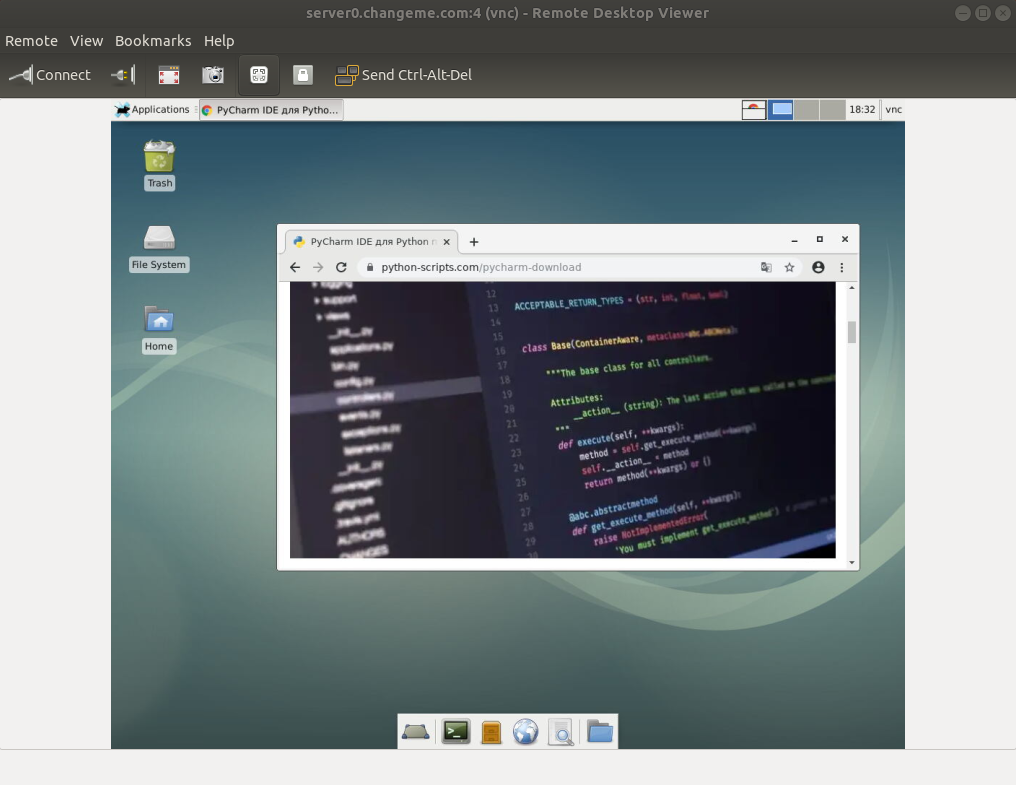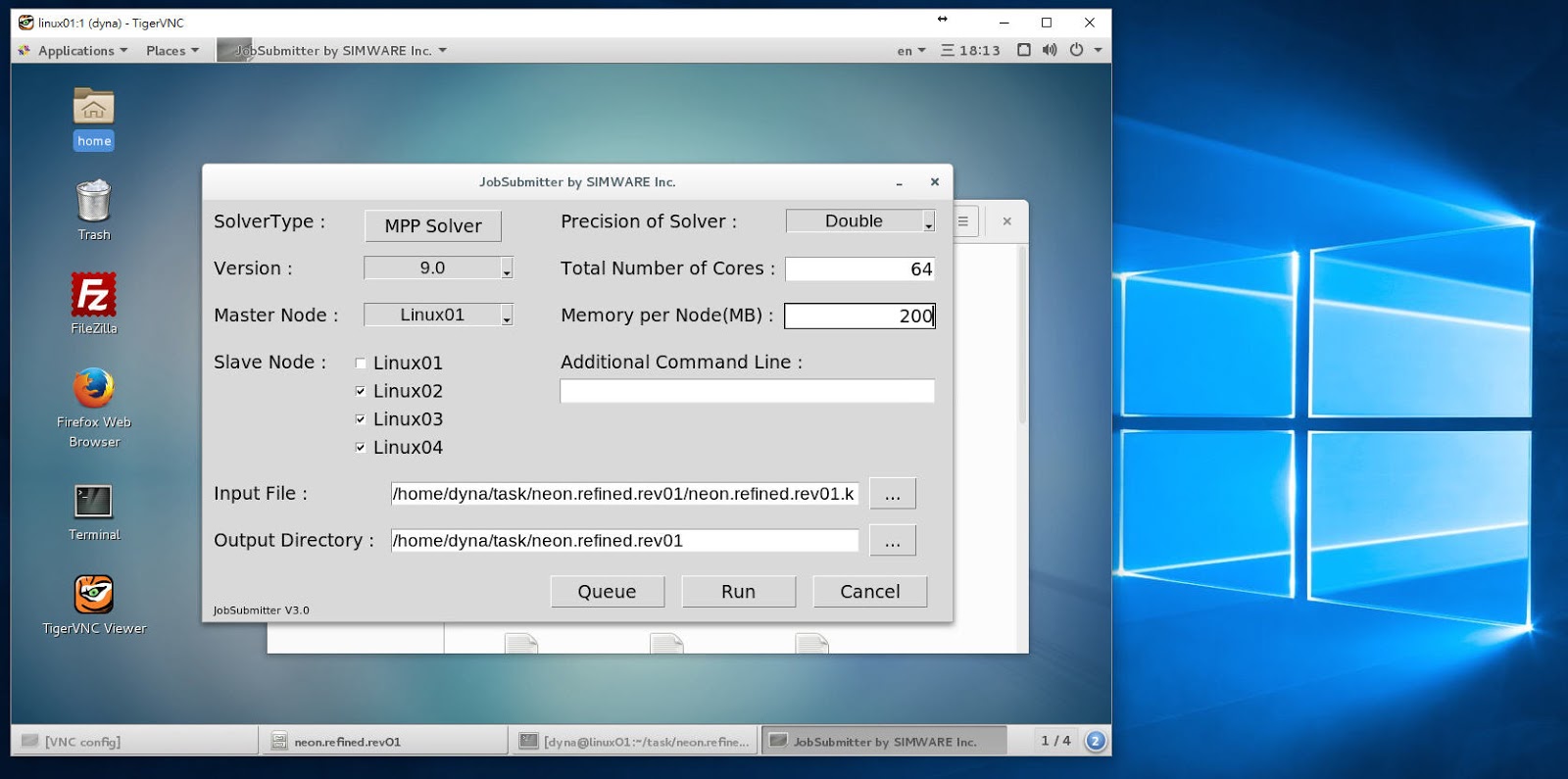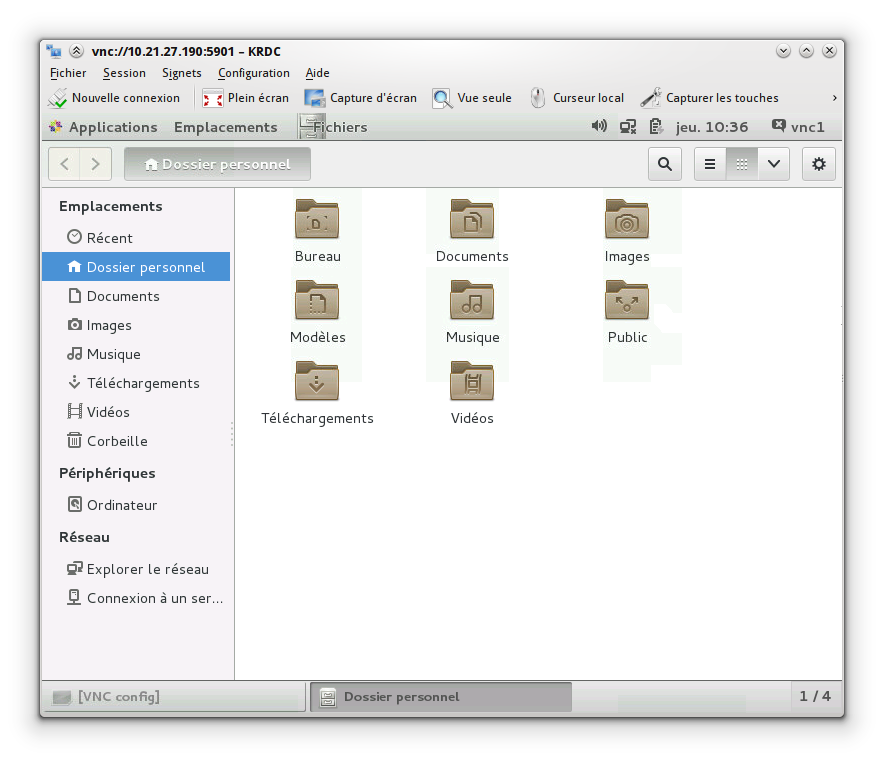

- #Start tigervnc server how to
- #Start tigervnc server install
- #Start tigervnc server code
- #Start tigervnc server Pc
How to do that depends on what DE you are using. Once you have verified that the above works, you can start the server at the beginning of each user session on the server.
#Start tigervnc server install
If both client and server are running linux, install tigervnc on both. To find this code, open another terminal tab, and use the cd command to go to the xsessions directory.
#Start tigervnc server code
Next, find the code to start the desktop environment. TigerVNC provides the levels of performance necessary to run 3D and video applications, and it attempts to maintain a common look. Make one by going to a terminal, and entering: echo '/bin/sh' > /.vnc/xstartup chmod u+x /.vncxstartup.
#Start tigervnc server Pc
What DE do you use on the server (the PC that you want to connect to remotely)? What DE do you have on the client (the PC that you are sitting in front of to access the other remotely)? DE could be KDE, Gnome, Cinnamon, XFCE, etc. TigerVNC is a high-performance, platform-neutral implementation of VNC (Virtual Network Computing), a client/server application that allows users to launch and interact with graphical applications on remote machines. Next, enable the service: sudo systemctl enable number 1 after the sign defines the display port on which the VNC service will run.This is going beyond support for a Manjaro issue but let's try. First save the file and then run: sudo systemctl daemon-reload We mast run sudo systemctl daemon-reload to see the effect of our change in let's proceed to using the systemd file. If you want to use it comment out line 11 and uncomment this (13) line. This is NOT recommended and thus commented out. In line 13 we have used the vncserver command to start the vncserver to only accept connections from all interfaces. To connect from remote host we must use SSH tunnel mentioned in the previous section. In line 11 we have used the vncserver command to start the vncserver to only accept connections from localhost interface. We need to replace that to our user name. If we notice the code for the systemd file we will see: Maybe we should move the config like -geometry, -autokill and -localhost to config file # ExecStart=/usr/bin/vncserver :%i -localhost no -geometry 1440x900 -autokill only use this if you know what you are doing # this start vncserver to accept connection from all interface so this is insecure. # this start vncserver to accept connection from localhost only so need to use SSH tunnelĮxecStart=/usr/bin/vncserver :%i -geometry 1440x900 -autokill Now paste the following lines in that file: ĮxecStartPre=/bin/bash -c '/usr/bin/vncserver -kill :%i > /dev/null 2>&1 || :' I am using vim: sudo vim if we are using vim it would be a good time to enable paste mode with Esc then : the type set paste Now we need to open a file with favourite our text editor. The systemd unit file will allow us to easily start, stop, and restart the VNC service as needed. We will how to do that later in View from local host section.īut if you are not concern about security like you are running a VM on local network then and sure about security then you can allow accepting connections from all interfaces by runnnig: vncserver -localhost no The next phase covers how to access the server that we configured using RDP client.

Configure firewall to allow RDP: sudo firewall-cmd -permanent -add-port3389/tcp sudo firewall-cmd -reload Connecting to the server with RDP client. We will need to use SSH tunnel to connect to the remote host. Start and enable xrdp service: sudo systemctl start xrdp sudo systemctl enable xrdp. So is by default when it starts it only accept connections from the localhost interface.

Looks like a pretty significant change1 between tigervnc-server-1.9.el8.rpm and tigervnc-server-1.10.el8.rpm This will be weird for RHEL8 folks since both versions are available. VNC is not an encrypted protocol and can be subject to packet sniffing. It seems likely to me that the root user was logged in graphically to the system's console when root's VNC session tried to start. Starting applications specified in /etc/X11/Xvnc-session has failed. XIO: fatal IO error 11 (Resource temporarily unavailable) on X server ":1"Īfter 173 requests (173 known processed) with 0 events remaining.ĬomparingUpdateTracker: 0 pixels in / 0 pixels out

Vncext: Listening for VNC connections on local interface(s), port 5901 Underlying X server release 12004000, The X.Org Foundation If this script is not used we may see the following error: server: Failed command '/etc/X11/Xvnc-session': 256!


 0 kommentar(er)
0 kommentar(er)
